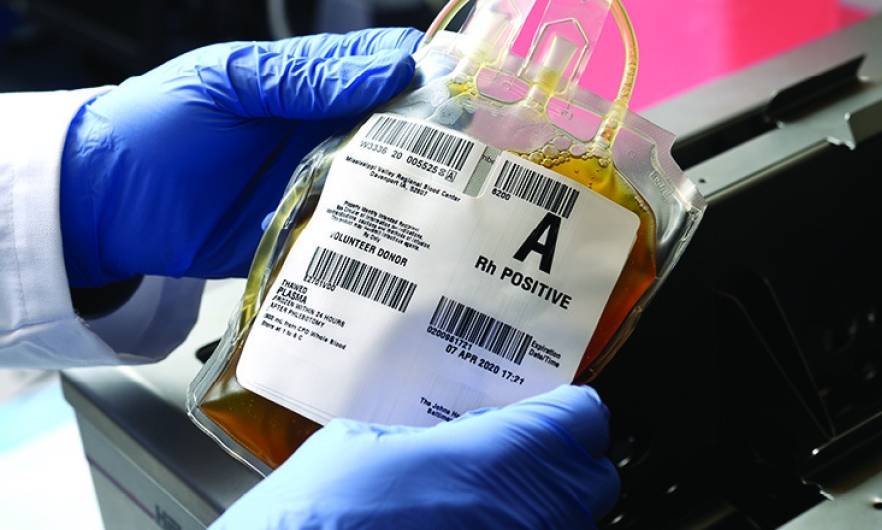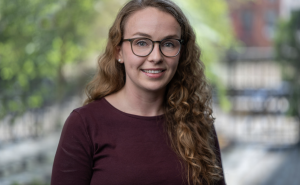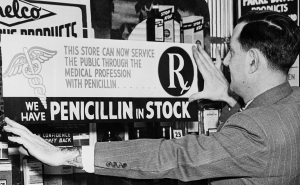An Update on COVID-19 Treatments: Monoclonal Antibodies, Convalescent Plasma, and Other Promising Developments

Nearly a year into the pandemic, we’ve gotten better at clinically treating COVID.
AN INTERVIEW WITH ARTURO CASADEVALL
COVID-19 mortality rates fell during the late summer and early fall, and better treatments were part of the reason why.
In a Q&A excerpted from the November 2 episode of Public Health On Call, Arturo Casadevall, chair of the Department of Molecular Microbiology and Immunology, talks with Stephanie Desmon about monoclonal antibodies and convalescent plasma as well as other treatments in the development pipeline.
Stephanie Desmon: [In the late summer and fall], we saw mortality rates going down. Were treatments the reason?
Arturo Casadevall: Yes, there were two major reasons that mortality was going down. First, a lot of the people who were getting COVID were younger. And mortality in younger [people], fortunately, is much lower.
But the other thing is that since March 1, there have been significant advances in how patients are treated. Doctors have learned, [for example,] that you can improve survival by turning patients over when they are on respirators.
I think the two biggest contributors to declining mortality in the hospital were the use of steroids in intubated patients and, in the United States, the use of convalescent plasma. Even though its efficacy is still being evaluated and we cannot say anything definitively, the preliminary indications suggest that it’s associated with a reduction in mortality if used early in the hospital course.
SD: Can you explain convalescent plasma?
AC: Plasma is the liquid that holds your blood together: the red cells, the white cells, the platelets. So, when you become ill with an infectious disease and you recover, you make antibodies to whatever made you ill. In this case, it would be [antibodies to] SARS-CoV-2—the virus that causes COVID.
Those antibodies are in the fluid—in the blood—and they can be taken out. Basically, people have a needle put in their arm, and the liquid is taken out. And that liquid can be used to treat other patients. The good thing is that a person who recovers can produce enough plasma to treat two or three other people.
SD: Convalescent plasma is still in clinical trials, but a study in The BMJ suggested that it has no effect on mortality of COVID patients. What’s your thought on that?
AC: The study is inconclusive [because] plasma was used late. If you look at the study, 82% of the patients already had their own antibodies. So basically, that was late in the course of infection. And we know that antibodies used late are not very effective.
Secondly, a lot of the units [of plasma they received] had very little antibodies in them. They used donors with mild disease that did not have a lot of antibody responses. Even though it was a great effort—and I commend my Indian colleagues for doing this—unfortunately, it doesn’t really help us very much because the study design doesn’t address the issues that are important for the use of plasma.
I would point that even though they did not see a reduction in mortality, some patients did get better. The plasma helped them clear the virus.
SD: Monoclonal antibodies were getting a lot of press. President Trump called them a cure after he received a cocktail [of them]. Tell me what they are and what role you think they may play in treatment.
AC: Convalescent plasma contains all the antibodies that a person makes. However, it is possible to take one of those antibodies and make lots of them. A monoclonal antibody is a single antibody and sometimes they put them together—what is called a monoclonal antibody cocktail. That’s what Trump received.
Both convalescent plasma and monoclonal antibodies are what we call antibody-based therapies, but they differ in how they are made. Convalescent plasma comes from people who donate their plasma, and monoclonal antibodies are essentially made in a factory. The big difference is that every unit of plasma is a little different, whereas monoclonal antibodies tend to be a standard product where every vial is the same.
SD: If it’s being made in a factory, then why is it more expensive than convalescent plasma?
AC: Convalescent plasma is only $300 to $400 a unit and patients usually need only one or two units. It’s probably the cheapest therapy that we have available.
The reason that monoclonal antibodies are so expensive is because they have to be made in what we call tissue culture. You have to grow the cells. And these cells have to produce the protein which then needs to be purified.
It’s not only labor-intensive, [but] the reagents are very expensive. In general, monoclonal antibody therapies— whether for COVID, cancer, or for rheumatological problems—tend to be expensive.
SD: Is it possible to do enough research on these antibodies right now, given that it’s hard to make a lot of them and it’s very expensive?
AC: Yes, it’s possible. They’re available and they are being given to patients. There are ongoing clinical trials with monoclonal antibodies. So there is certainly a sufficient amount for research and for the clinical trials that are ongoing.
I think the issue is not so much a completion of the trials, but what would happen if these reagents were to prove very effective. Could you rapidly scale them up to treat a population where you have millions of people infected? We don’t know that yet.
SD: There’s a lot of excitement about monoclonal antibodies. I’ve heard them called a “bridge to the vaccine.” What does that mean?
AC: That’s probably not good terminology because they work very differently. When you get a vaccine, you make your own antibodies and then you’re immune. These antibodies, if they are given to you before you get sick, for example, can give you some immunity, but they don’t last very long.
The way I would think about it is there are advanced therapies that are hopefully on the way. I think we’re going to be using convalescent plasma into 2021. At some point, hopefully, we will have better antibody-based therapies, which will be either the monoclonals or the hyper-immunoglobulin that is also under development that is made from plasma.
SD: What’s the difference between monoclonals and hyper-immunoglobulin?
AC: When you get convalescent plasma, you get a unit that comes from a patient. However, you could imagine collecting thousands of units and bringing them into, essentially, a factory where they take out the antibodies and concentrate them. You then get only the antibodies, and that’s known as hyper-immunoglobulin. It just began a clinical trial.
[This is also] promising. The advantage over plasma would be that it’s more of a standardized product, so that you know what’s in each vial, similar to monoclonal antibodies.
SD: Once we have COVID-19 vaccines that are approved—especially if we’re not sure how effective they are yet—will these prevention measures continue?
AC: We should probably separate the vaccine efficacy from when we stop the prevention. I think we will stop prevention once we reach a certain level of immunity in the population.
The good thing is that at least a dozen vaccines are under advanced development. And given that people, when they recover from COVID, mount very strong antibody responses that are neutralizing for the virus, that gives us tremendous hope that some of these vaccines are going to be effective.
Now, what does it mean to be effective? We have some vaccines that you have to take only once every 10 years—tetanus toxoid, for example. We have other vaccines where immunity doesn’t last very long, and you have to get them a lot more frequently—we get vaccinated every year for the flu, for example.
The important thing will be to get a vaccine out there and get this protection for a significant amount of the population, even 50%. If you can immunize 50% of the people, you could prevent—significantly prevent—transmission and those people would be protected. But, I’m hopeful that the type of vaccines that we’ve seen in development will give us a lot better than 50%.
Arturo Casadevall is the chair of the Department of Molecular Microbiology and Immunology and a Bloomberg Distinguished Professor at the Johns Hopkins Bloomberg School of Public Health.
RELATED CONTENT
Public Health On Call
This conversation is excerpted from the Nov 2 episode of Public Health On Call.





